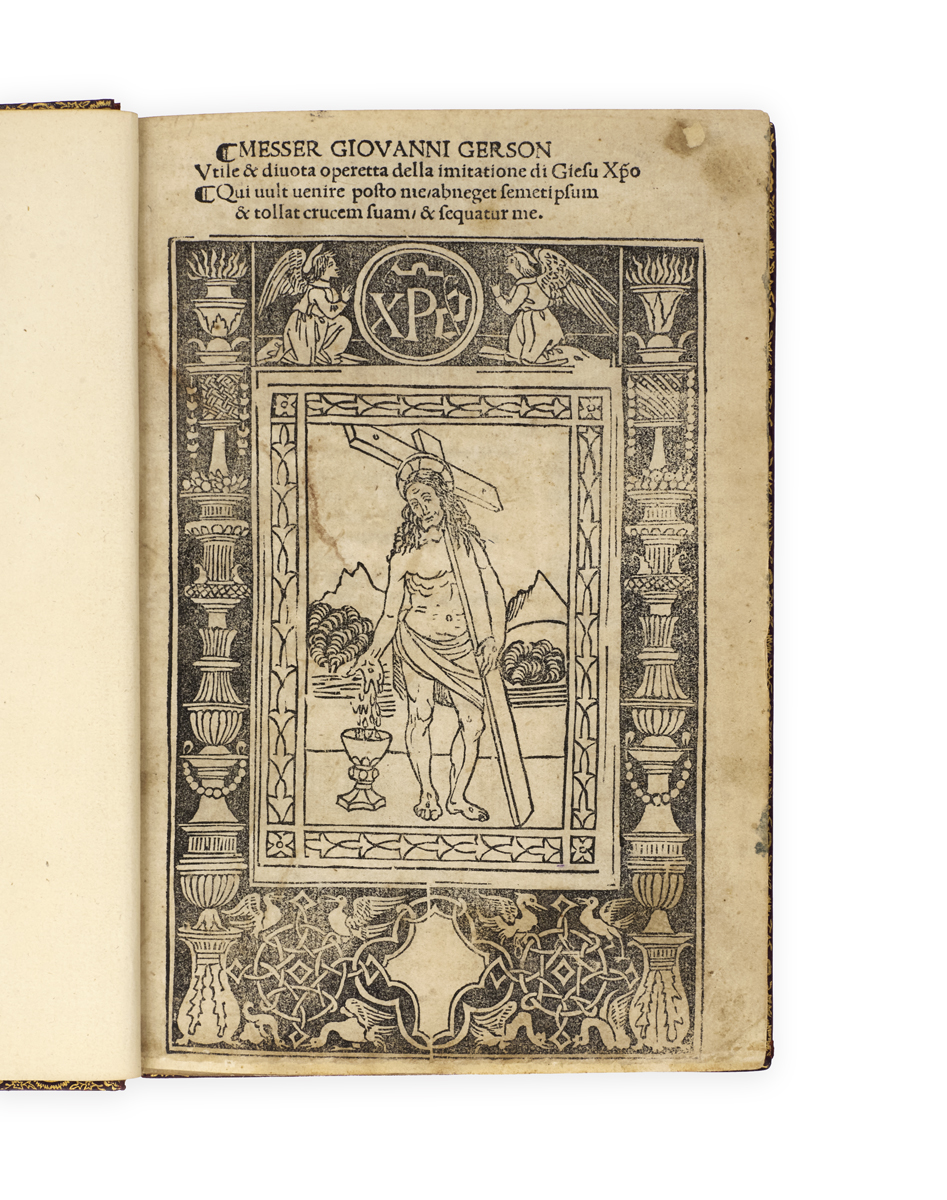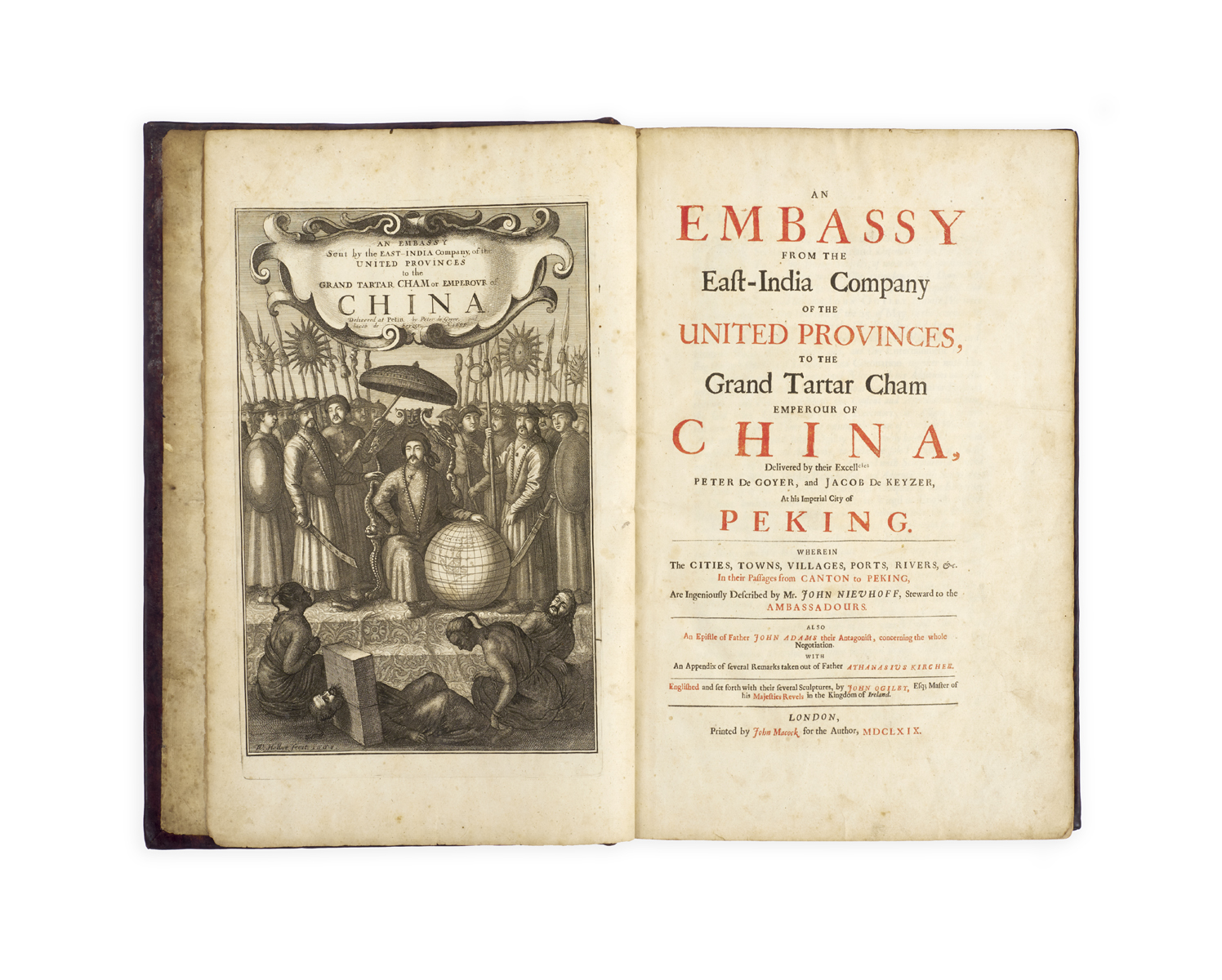
ITALIAN IMITATION OF CHRIST
[THOMAS À KEMPIS.]
Messer Giovanni Gerson. Utile & divota operetta della imitatione di Giesu Xpo …
Florence, Piero Pacini da Pescia, 16 April 1505.
4to, ff. [76]; woodcut of Christ within border to title, woodcut initials, 2 woodcut ‘Piscia’ devices to last page; small repaired hole at head of title, foot of title repaired, repairs to lower outer corners of [pi]3–4, marginal tears to f1 repaired, small wormtrack to inner margins of quire i, some light foxing, light marginal dampstaining to a few leaves; overall good in twentieth-century dark brown morocco, title and imprint in gilt to spine, gilt turn-ins and edges, marbled endpapers; extremities very slightly rubbed.

Added to your basket:
Messer Giovanni Gerson. Utile & divota operetta della imitatione di Giesu Xpo …
Scarce edition of an anonymous Italian translation of the Imitatio Christi, with a striking woodcut of Christ to the title.
One of the most influential works of Christian literature after the Bible, the Imitatio Christi was long attributed to Jean Gerson but is now generally ascribed to the German-Dutch ascetical writer Thomas à Kempis (c. 1380–1471). ‘The purpose of this famous manual of spiritual devotion is to instruct the Christian how to seek perfection by following Christ as his model. The book is divided into four parts. The first two contain general counsel for the spiritual life, the third deals with the interior dispositions of the soul, and the fourth with the sacrament of the Holy Communion’ (Oxford Dictionary of the Christian Church).
The Imitatio circulated in manuscript from 1418 with the Latin editio princeps being printed at Augsburg by Günther Zainer in 1473. Editions in various vernaculars swiftly followed: in Catalan (1482), German (1486), Spanish (c. 1488), and French (1488). An Italian translation was first published in Venice by Johannes Rubeus in 1488, with another version appearing in 1491 in a Florentine edition by Antonio Miscomini. Our Piero Pacini edition is a reprint of that published by Miscomini on 1 July 1494 (ISTC ii00053000).
The title-page carries a woodcut showing the crucified and risen Christ with the cross in his left hand and blood falling from his right hand into a cup. The surrounding white-on-black border incorporates the Greek Christogram flanked by two kneeling angels.
EDIT16 42816; USTC 800051. Only one copy traced in the UK (BL) and three in the US (Harvard, Library of Congress, Yale).

